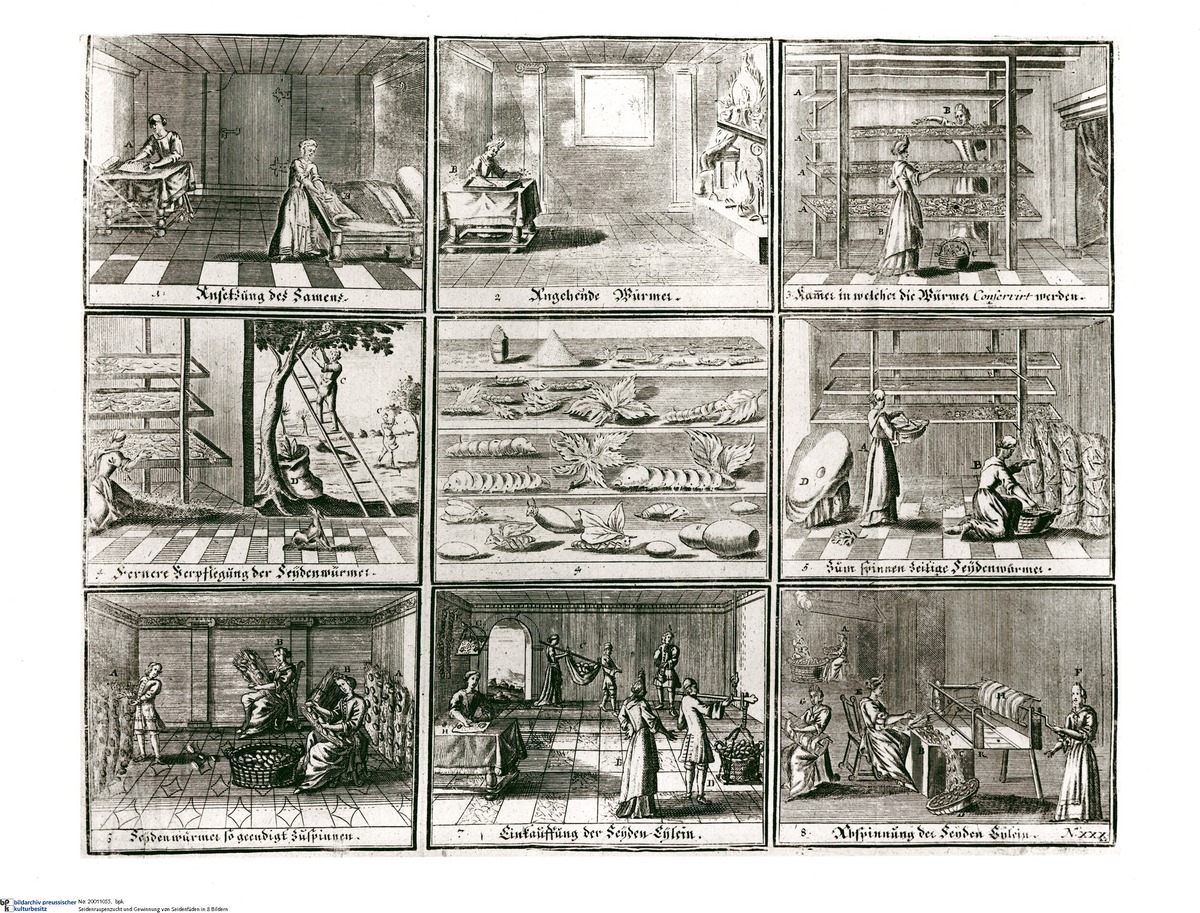Abstract
This engraving shows the silk-manufacturing process from the
preparation of the silkworms’ eggs (top left) to the spinning of silk
(bottom right). The production of silk fabrics started in China and
spread to Europe in the Middle Ages. Until the mid-sixteenth century,
the city of Cologne played the leading role in the German silk industry.
Over time, however, Cologne’s importance declined, and it eventually
ceded its leading position to Krefeld in the late seventeenth
century.
Silk was a luxury good, and as such, it was viewed as the preserve of
the propertied classes. In the second half of the eighteenth century,
however, silk adornments also became available to urban and rural
commoners. In Prussia, as elsewhere in Germany, efforts to uphold
traditional sartorial distinctions among the various classes faded under
the influence of mercantilist, cameralist, and Enlightenment doctrines
that advocated the widening of commercial markets and spurred the demand
for industrial goods.
